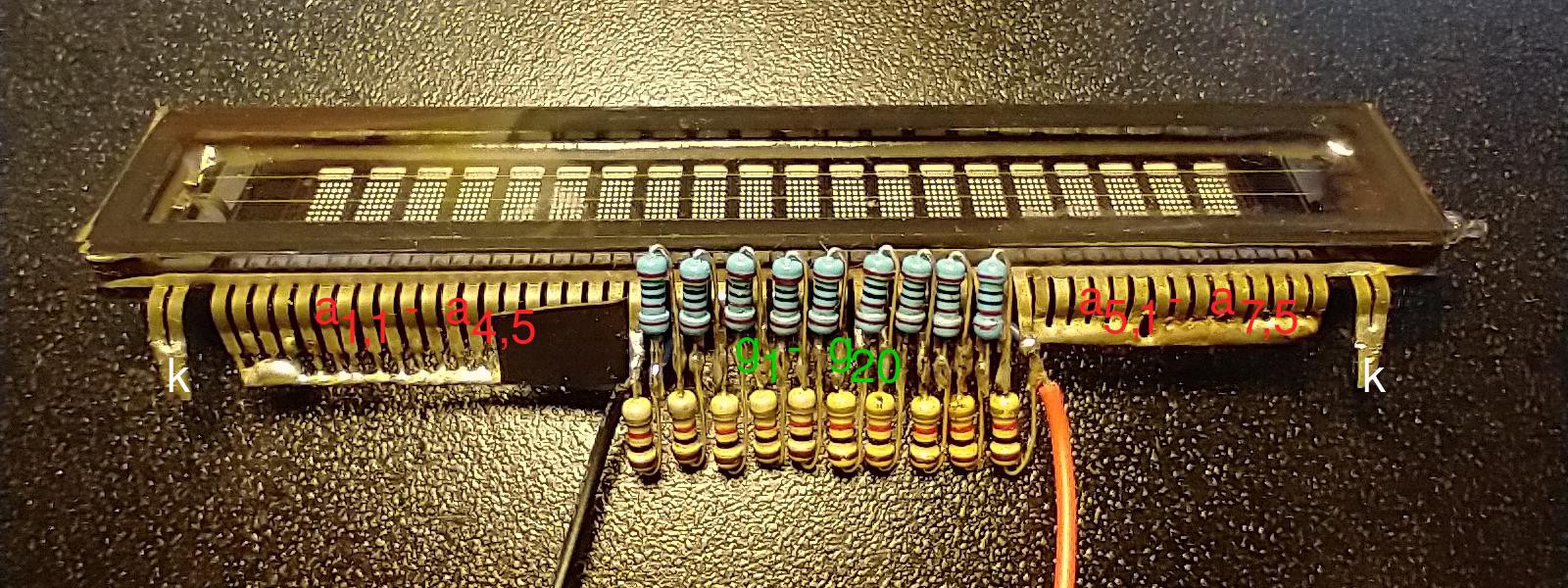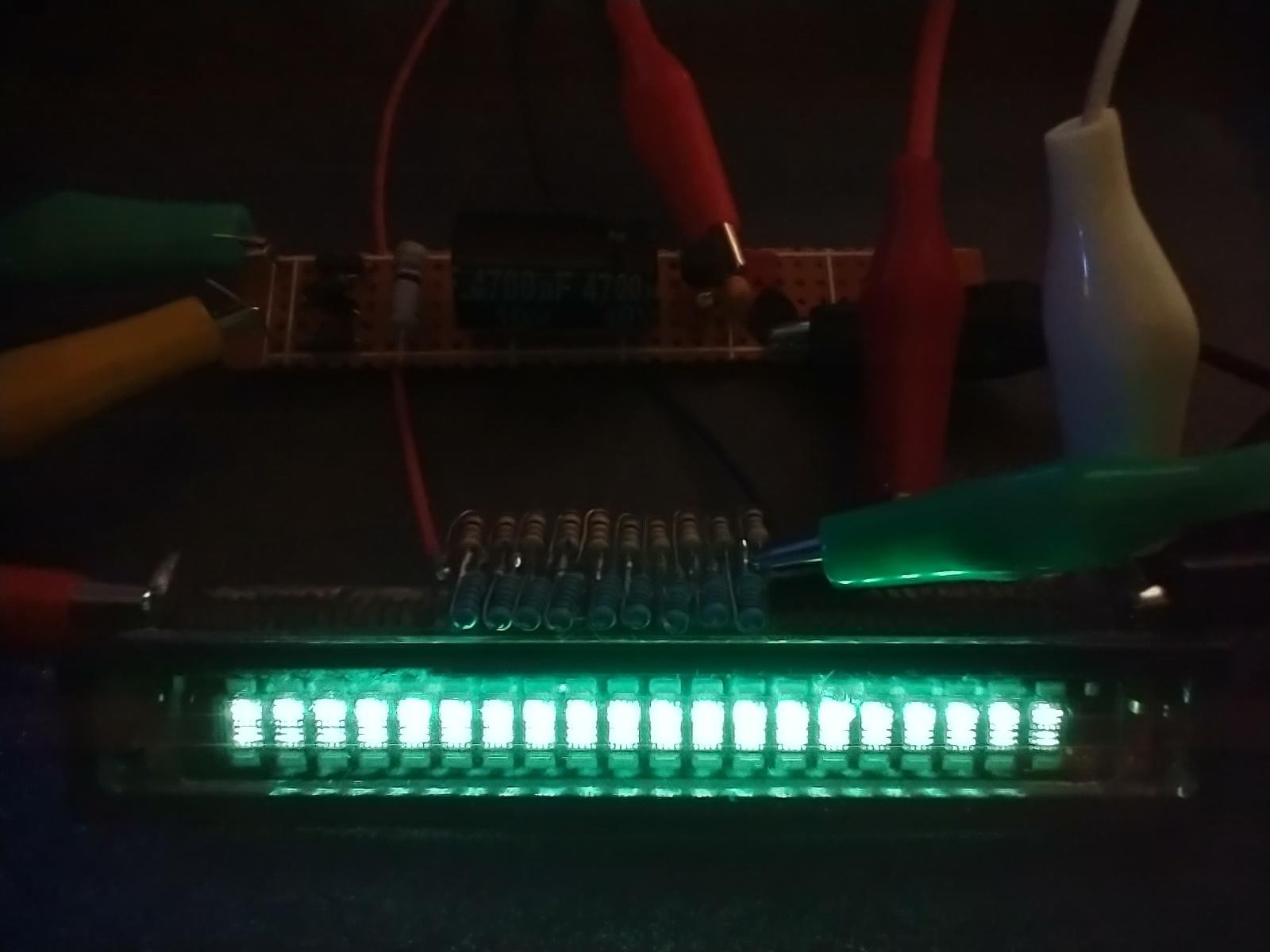One of several problems with using a multi-character VFD as a triode is that the potential across the directly heated cathode varies linearly. For my Futaba VFD the cathode voltage Vk increases from 0 V to 3.1 V from one end of the filament to the opposite end. If you simply connect the grid pins to merge the grid segments into a single grid, the grid bias Vgk will then vary by 3.1 V from one end of the grid (the g1 segment) to the other (the g20 segment). This has a very visible effect known as "luminance slant", where the characters are brighter closer to the grounded side of the filament. Luminance slant must have a deleterious effect on triode performance (reduced gain, increased distortion, increased anode resistance and output impedance), so here's my crude attempt to avoid it:

I've connected the grid segments with a 1 kΩ resistor between each segment. I've then soldered the leads of a double-AA battery holder to pins g1 and g20, respectively, so that I can apply 3.1 V across the distributed grid to match the voltage across the filament. This will only work for operation with a negative grid! With a positive grid you get some odd currents flowing from the grid segments to the filament.
The anode segments are merged together into a single anode by simply connecting all the pins:

The blue-and-white wire connects the upper and lower halves of the anode.
Time to light her up to see if the luminance slant is cured:

Yup, that did it! The leftmost anode is a bright as the rightmost one, which is grounded. The most prominent luminance non-uniformity is now vertical instead of horizontal. The anode segments in the vertical middle (between filaments) as visibly dimmer, but I'm going to tolerate that, for now.
Today is Twosday and I've made two posts to this project. That seems appropriate.
Discussions
Become a Hackaday.io Member
Create an account to leave a comment. Already have an account? Log In.